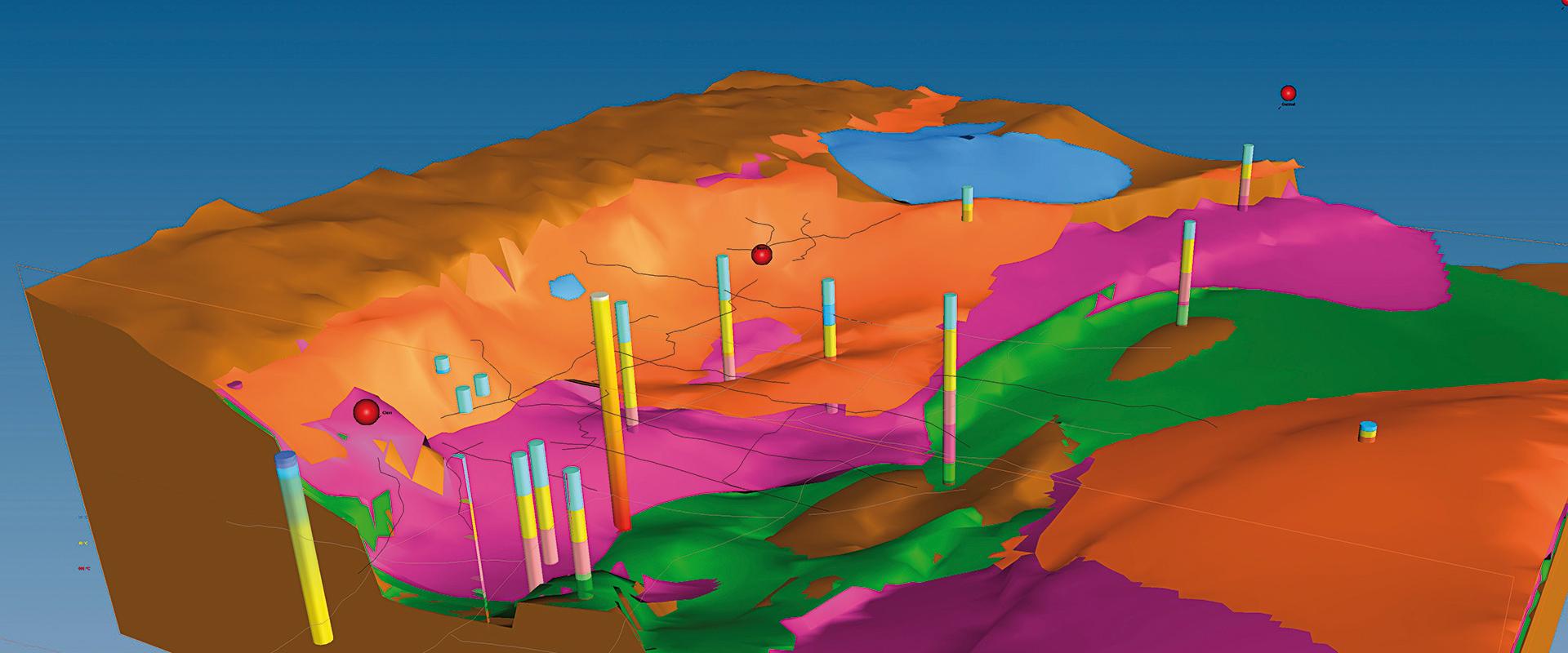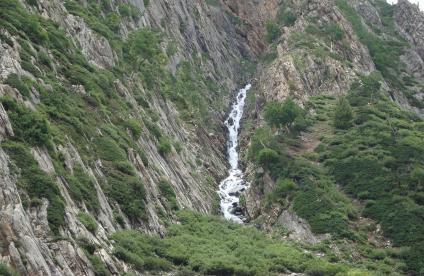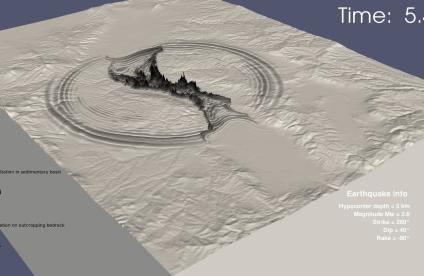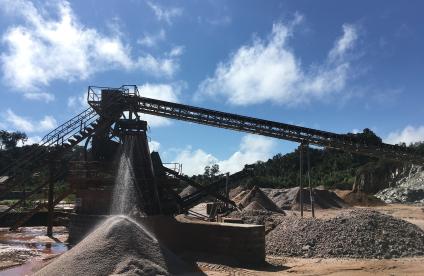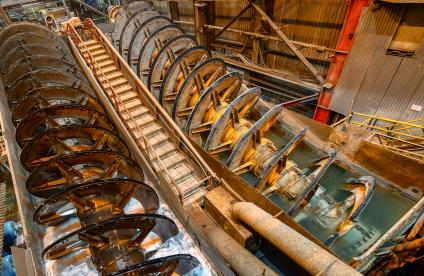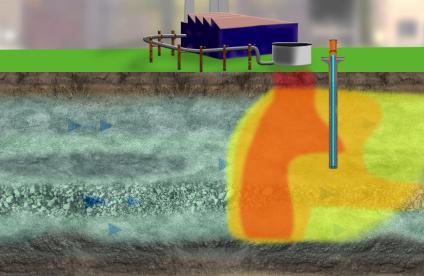
Deep architecture of the Vosges massif compared with geophysical data, realized with Geomodeller 3D (2013)
© BRGM
The GeoModeller Software was first created by BRGM in the mid-1990s for building cross-section models and then for 3D geological models. It enables the geological architecture (lithologies and faults) of an area to be defined.
Much more than a simple 3D geometric display window, GeoModeller is a modelling tool, allowing interactive and incremental work. It can represent data of different types and formats (maps, cross-sections, boreholes, geophysical surveys, hydrogeological data, etc.) in a single workspace and interpret them by interpolating the surfaces delimiting the most complex geological bodies, in 3D, using an innovative geostatistical method.
Creating dynamic 3D models
Once the 3D geological model has been produced, it can be fully modified and new data can be integrated to continue making the geometries consistent and defining them precisely. A GeoModeller model can be exported to other software and used as a basis for dynamic models: simulations of earthquakes, fluid circulation, slope stability, etc.
The construction of geometrical structures evolves as new acquisitions are made. The integrated data can be viewed, identified, searched and modified at any time. The 3D geological model obtained with GeoModeller thus enables the results from the geological modelling to be compared with all of the acquired data and other interpretations, in particular geophysical ones.
Understanding complex subsurface geometries
GeoModeller is both easy to use and intuitive and offers several direct geophysical modelling features and inversion algorithms. It is possible to assign properties such as density, magnetisation or magnetic susceptibility to each modelled formation.
The software can thus be used to test innumerable hypotheses by modifying the various parameters and data, making it a formidable tool for validating and understanding complex 3D geometries.
Finally, GeoModeller can also be used as a communication tool, whether for the multidisciplinary teams involved in the study or for the scientific community, local authorities and the general public.

